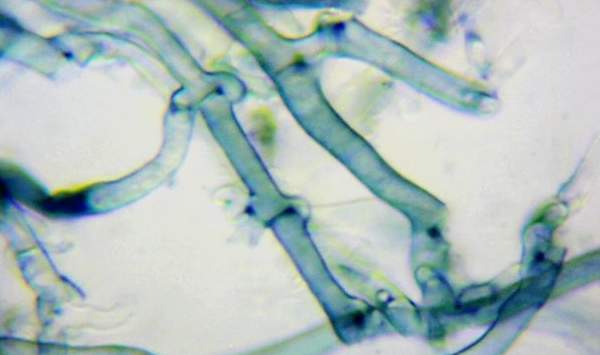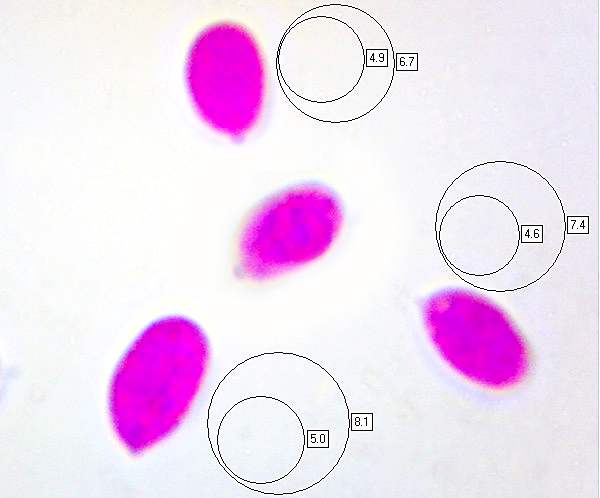Terana caerulea (Lam.) Kuntze - Cobalt Crust
Phylum: Basidiomycota - Class: Agaricomycetes - Order: Polyporales - Family: Phanerochaetaceae
Distribution - Taxonomic History - Etymology - Identification - Culinary Notes - Reference Sources
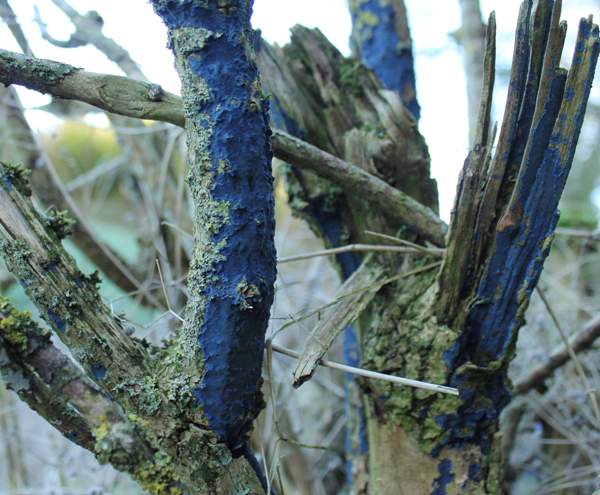
Quite a rare sight but instantly recognisable even from a distance, this corticioid (crust-like) fungus is a real beauty, especially when young and fresh.
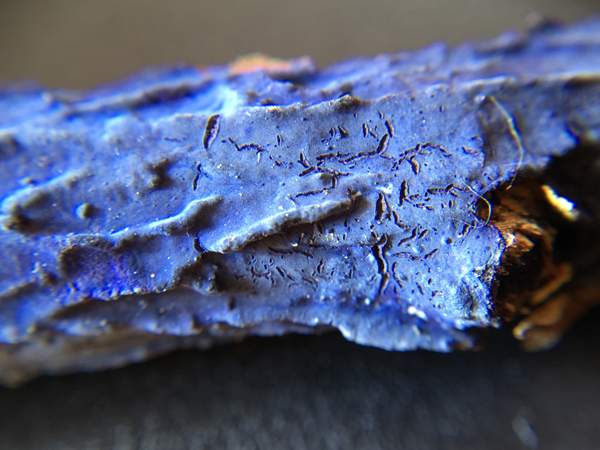
Distribution
Terana caerulea is an uncommon find in England and Wales and very rarely recorded in Scotland and Ireland. This crust fungus is found in many central and southern European countries and elsewhere including parts of Asia, New Zealand and North America.
Taxonomic history
Cobalt Crust fungus was described in 1779 by French naturalist Jean-Baptiste Pierre Antoine de Monet, Chevalier de Lamarck (1744 - 1829), who gave it the name Byssus caerulea. Its currently-accepted scientific name Terana caerulea dates from a, 1891 publication by German botanist and mycologist Otto Kuntze (1843 -1907).
Synonyms of Teranea caerulea include Byssus phosphorea L., Byssus caerulea Lam., Auricularia phosphorea Sowerby, Thelephora caerulea (Lam.) Schrad. ex DC., Thelephora indigo Schwein., Corticium caeruleum (Lam.) Fr., and Pulcherricium caeruleum (Lam.) Parmasto. (The latter synonym is used in many older field guides.)
Terana caerulea is the type species of the genus Teranea. In Britain this is a monotypic genus.
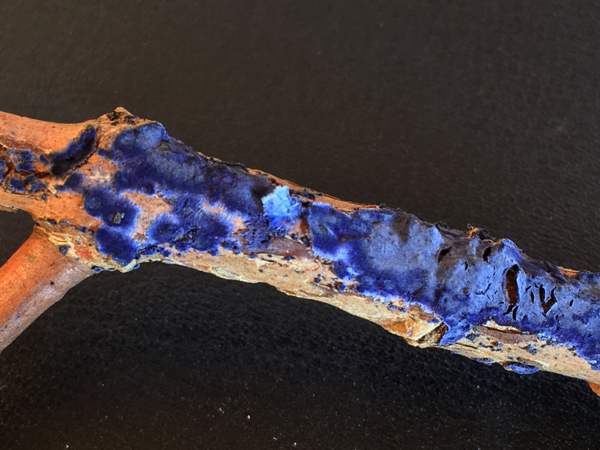
Etymology
The meaning of Terana, the genus name, is unknown to us. The specific epithet caerulea means dark blue.
Identification guide
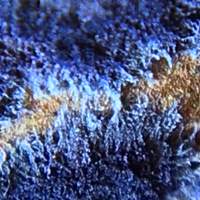 |
FruitbodyIntensely dark blue resupinate rounded fruitbodies that coalesce to form irregular large patches with either smooth or slightly bumpy or warty fertile surfaces that are usually finely velvety. This is a very thin crust fungus, generally much less than 1mm in thickness. When moist, the texture of these crust fungi is softish with a waxy feel, and the outer margins are pale, sometimes whitish, and finely fringed. Old specimens turn dark blue and eventually almost black. |
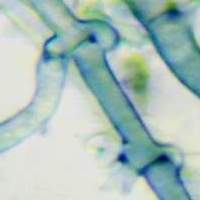 |
Hyphal SystemMonomitic (containing only generative, branched tubular hyphae typically 3 to 5µm in diameter); Clamps (see left) are present.
|
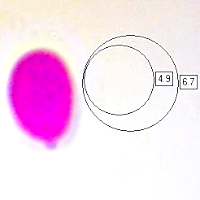 |
SporesEllipsoidal, smooth, thin-walled, 6.5-9.0 x 4.5-5.5µm; hyaline or very nearly so; inamyloid.
Spore printCreamy white; sometimes a bluish tinge is detectable. |
Odour/taste |
No noticeable odour; tough when dry, waxy when wet, but quite tasteless. |
Habitat & Ecological role |
Saprobic, on dead hardwood trees and fallen branches, particularly Ash Fraxinus excelsior.. |
Season |
All through the year, but shedding spores in autumn. |
Similar species |
Stereum subtomentosum is sometimes entirely resupinate and then similar in form to Cobalt Crust, but it is usually various shades of greyish-orange. |
Culinary Notes
These tasteless fungi are inedible and of no culinary value.
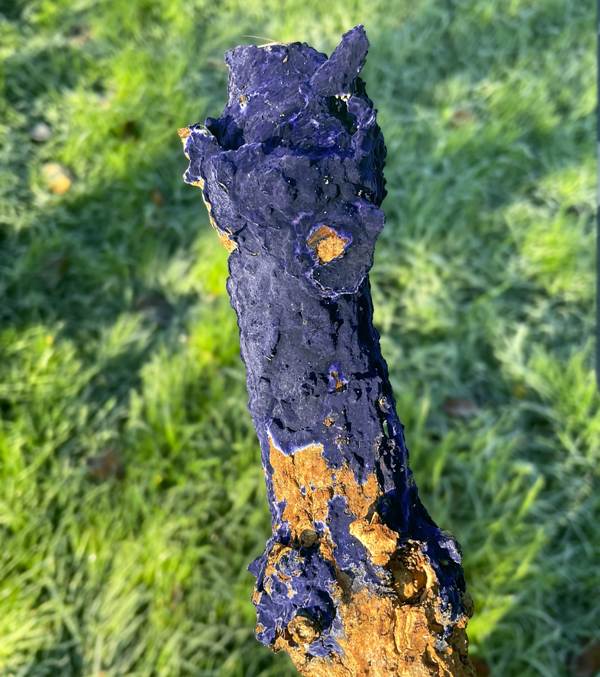
Reference Sources
Ellis, J. B.; Ellis, Martin B. (1990). Fungi Without Gills (Hymenomycetes and Gasteromycetes): an Identification Handbook. London: Chapman and Hall. (Cobal Crust included as Pulcherricium caeruleum)
Paul M. Kirk, Paul F. Cannon, David W. Minter and J. A. Stalpers. (2008). Dictionary of the Fungi; CABI.
Taxonomic history and synonym information on these pages is drawn from many sources but in particular from the British Mycological Society's GB Checklist of Fungi.
Acknowledgements
This page includes pictures kindly contributed by Simon Harding and David Lawman.
Fascinated by Fungi. Back by popular demand, Pat O'Reilly's best-selling 450-page hardback book is available now. The latest second edition was republished with a sparkling new cover design in September 2022 by Coch-y-Bonddu Books. Full details and copies are available from the publisher's online bookshop...

